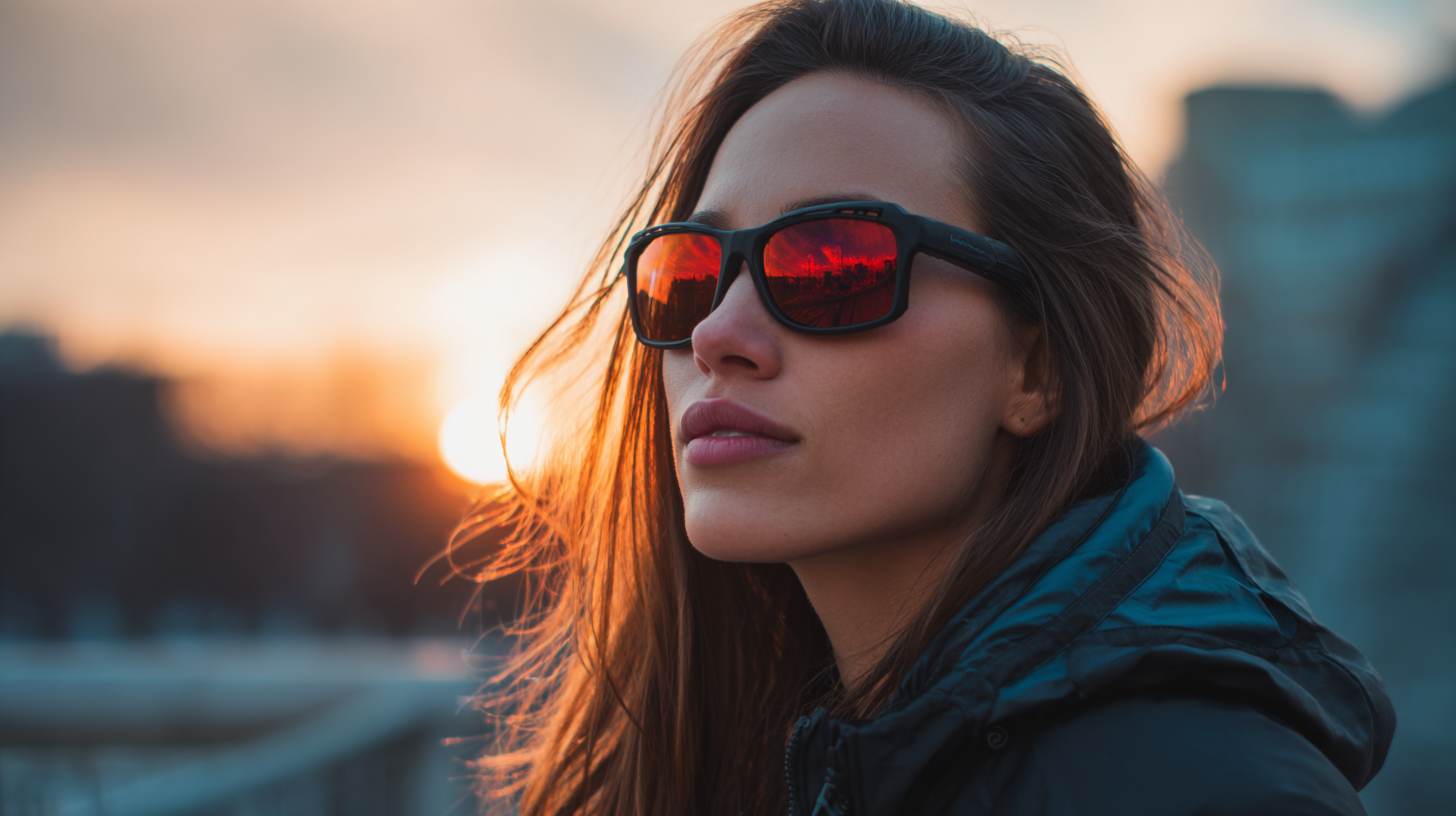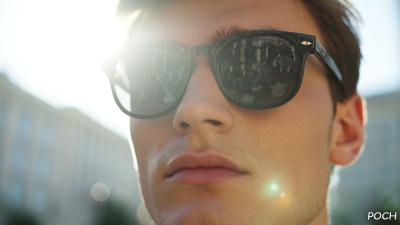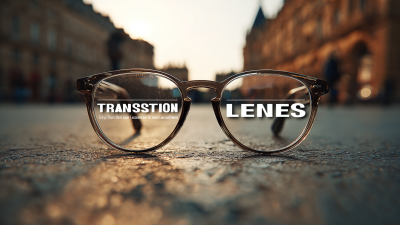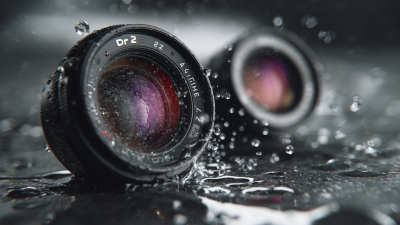As the demand for functional eyewear continues to rise, photochromic sunglasses have emerged as an essential accessory for many individuals seeking both style and protection. According to a report by Smith Optics, approximately 30% of consumers prefer sunglasses that adapt to changing light conditions, highlighting the growing necessity for versatile eyewear solutions. Photochromic sunglasses offer a unique combination of UV protection and visual comfort, adjusting their tint based on sunlight exposure, which is particularly beneficial for outdoor enthusiasts and those with active lifestyles. Furthermore, a survey by the Vision Council reveals that 71% of Americans consider UV protection an essential feature when purchasing sunglasses, reinforcing the importance of choosing the right photochromic lenses. With various options available on the market, understanding your lifestyle requirements and how photochromic sunglasses can enhance your daily activities is crucial to making an informed decision.

Photochromic sunglasses are an innovative solution for those seeking eye protection that adapts to changing light conditions. Utilizing advanced technology, these lenses darken in response to UV radiation and clear up again indoors, providing the ultimate convenience for outdoor enthusiasts and everyday users alike. Understanding how photochromic technology works can help you choose the right pair suited to your lifestyle.
The benefits of photochromic sunglasses extend beyond mere convenience; they also provide enhanced visual comfort and protection. By automatically adjusting to brightness levels, these lenses help reduce eye strain and provide sharper vision in varying light conditions. Additionally, many photochromic lenses offer 100% UV protection, shielding your eyes from harmful rays that can lead to long-term damage. Whether you are driving, hiking, or simply enjoying a day at the beach, investing in a quality pair of photochromic sunglasses can significantly enhance your outdoor experience while ensuring your eyes remain safe and comfortable.
When selecting photochromic sunglasses, it's essential to evaluate your lifestyle needs carefully. Start by considering the primary activities you engage in during the day. If you often find yourself transitioning between indoor and outdoor environments, such as commuting to work or enjoying outdoor sports, sunglasses that adapt quickly to varying light conditions will be crucial. Look for models that provide fast and effective tinting changes, ensuring comfort and clarity in different environments.
Additionally, think about specific features that align with your daily routines and preferences. For instance, if you spend a significant amount of time driving, prioritize lenses that offer enhanced polarization to reduce glare from the road and ensure safety. On the other hand, if fashion is a critical aspect for you, choose a stylish frame that complements your look while incorporating the photochromic functionality. By aligning your sunglasses choice with your lifestyle, you can enhance both your vision comfort and style in various situations.
| Lifestyle Type | Main Activities | Recommended Features | Lens Types | UV Protection |
|---|---|---|---|---|
| Outdoor Enthusiast | Hiking, Cycling, Camping | Polarized lenses, high durability | Photochromic, Polarized | 100% UVA/B protection |
| Urban Commuter | Biking, Walking, Public Transit | Lightweight, comfortable fit | Photochromic, Scratch-resistant | 100% UVA/B protection |
| Sporty Individual | Running, Tennis, Water Sports | Wraparound style, impact-resistant | Photochromic, Anti-fog | 100% UVA/B protection |
| Leisure Wearer | Beach, Pool, Casual Outings | Fashionable design, UV protection | Photochromic, Gradient lenses | 100% UVA/B protection |
When selecting the best photochromic sunglasses, it's crucial to focus on key features that align with your lifestyle and needs. One of the most significant aspects to consider is the lens material. Polycarbonate lenses, known for their durability and lightweight properties, are ideal for active individuals. According to a report by Vision Council, nearly 75% of consumers prefer lightweight sunglasses for outdoor activities, making polycarbonate a popular choice.

Additionally, the speed of the lens transition is vital for those frequently moving between different lighting conditions. High-quality photochromic lenses can adjust their tint within seconds, providing optimal protection against UV rays while ensuring comfort. A study published in the Journal of Optometry found that modern photochromic technology can block up to 100% of harmful UV rays and reduce glare, enhancing visual clarity.
Lastly, polarization is another feature that cannot be overlooked, especially for water sports enthusiasts. Polarized lenses can significantly reduce glare from surfaces such as water and roads, improving visual comfort and safety during outdoor excursions.
When selecting photochromic sunglasses, understanding the brand options and price points can significantly influence your choice. According to a report by the Vision Council, the global eyewear market is projected to reach $166 billion by 2025, with photochromic lenses accounting for a growing percentage due to their convenience and adaptive features. Major brands like Ray-Ban and Oakley offer high-end models with advanced photochromic technology, typically ranging from $150 to $300. These sunglasses not only enhance visual comfort but also provide UV protection, essential for outdoor enthusiasts.
In contrast, budget-friendly alternatives from brands such as FSA or SunGlo offer photochromic options in the $50 to $100 range. While these sunglasses may lack some premium features, they can still provide satisfactory performance for casual use. A Consumer Reports survey highlights that nearly 65% of consumers prioritize price over brand loyalty when choosing sunglasses. Therefore, assessing your lifestyle and activity level is crucial; if you frequently engage in outdoor sports, investing in a well-known brand may yield better performance and longevity, whereas occasional users may find value in more economical choices.

Maintaining and caring for your photochromic sunglasses is crucial to ensure their longevity and optimal performance. Regular cleaning is essential, but it's vital to use the right methods to avoid damaging the lenses. Instead of paper towels or clothing, which can scratch the surface, opt for a microfiber cloth and a solution specifically designed for eyewear. This gentle approach helps maintain the clarity of your lenses and preserves their photochromic properties, which can be impacted by improper care.
To enhance your eye health alongside protecting your vision with sunglasses, consider incorporating essential vitamins and supplements into your daily routine. Research indicates that nutrients like vitamin C, omega-3 fatty acids, and lutein can play a significant role in maintaining good eyesight. For instance, studies suggest that a diet rich in these vitamins may reduce the risk of cataracts and age-related macular degeneration. It’s important to pair your sunglass care with good nutritional practices to support eye health fully.
When you're not wearing your sunglasses, store them in a protective case to shield them from dust and scratches. Additionally, keep them out of extreme temperatures, as both heat and cold can compromise the integrity of the lenses. By following these simple tips, you can ensure that your sunglasses remain in excellent condition while also prioritizing eye health through proper nutrition.







